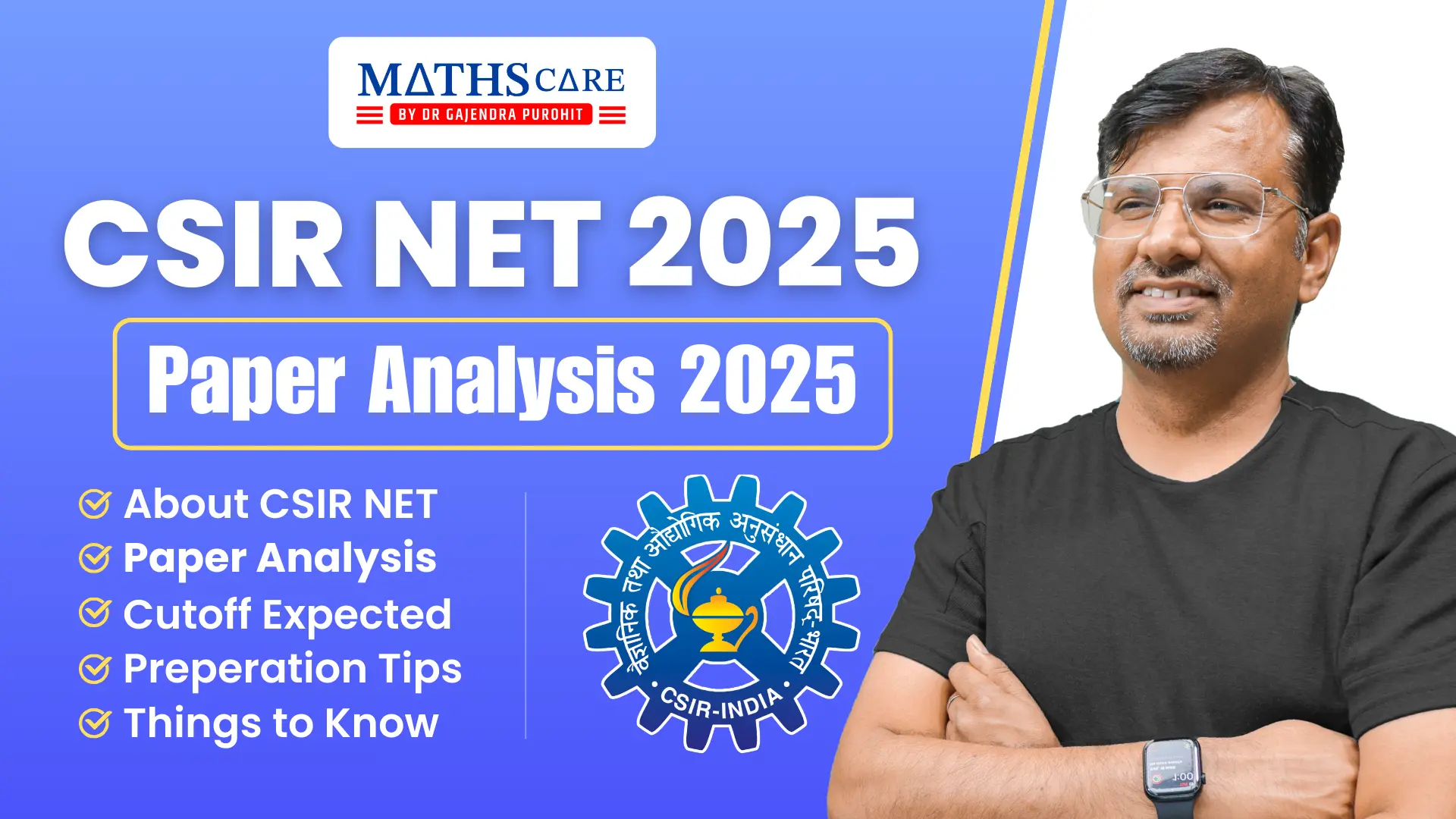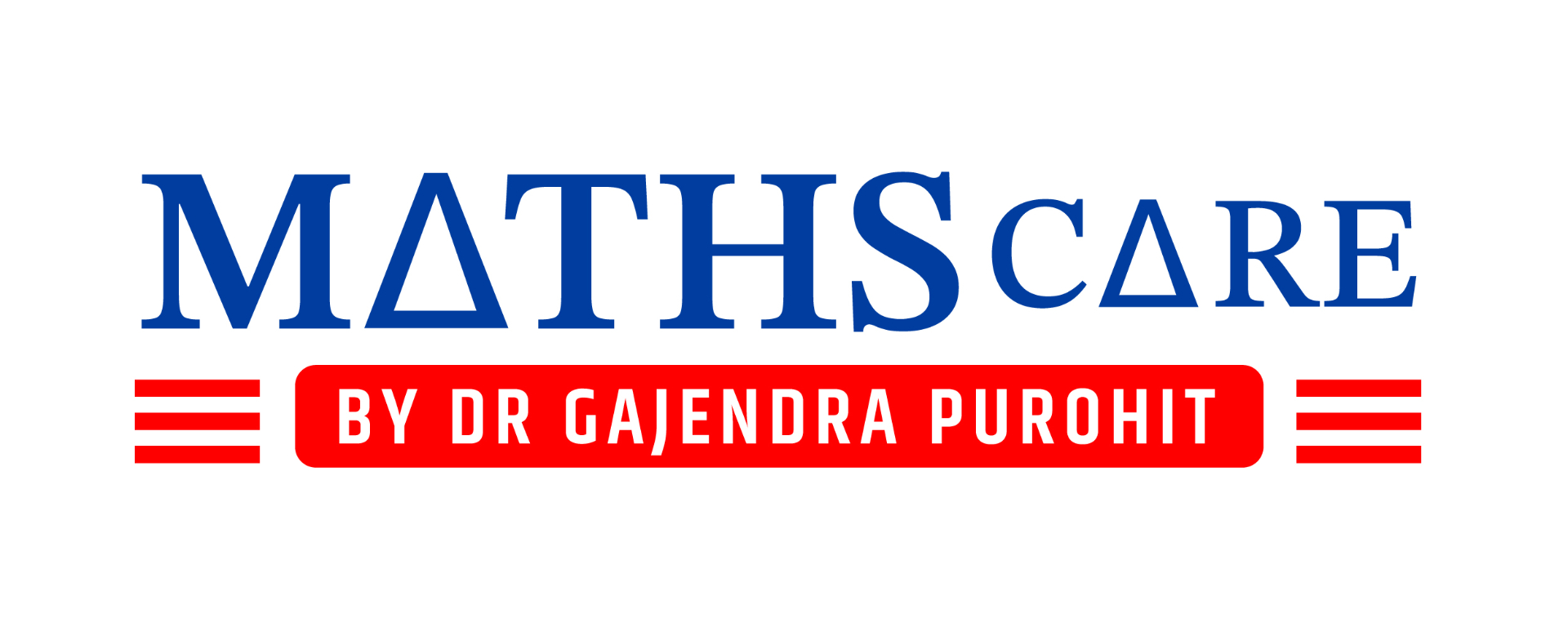CSIR NET Paper Analysis 2025
CSIR NET (Council of Scientific and Industrial Research National Eligibility Test): The CSIR NET exam is one of the most significant national-level tests for aspirants aiming for a Junior Research Fellowship (JRF) or a Lectureship (LS) in various scientific fields. The 2025 edition of the exam was conducted recently, and candidates are eager to know the difficulty level, marking scheme, and expected cutoffs. This paper analysis will help aspirants understand how the exam was structured, what to expect in terms of results, and how to plan their next steps based on their performance. With thousands of candidates appearing for the exam, a well-structured strategy is essential for success. Understanding the exam’s nuances can provide clarity to candidates who are planning their next attempt or applying for research and teaching positions.

About CSIR NET
The Council of Scientific and Industrial Research – National Eligibility Test (CSIR NET) is conducted to determine the eligibility of candidates for research positions and teaching roles in India’s top scientific and academic institutions. It is held in five major subjects: Mathematical Sciences, Life Sciences, Physical Sciences, Chemical Sciences, and Earth Sciences. The test is considered highly competitive, with thousands of candidates appearing each year for limited fellowship and teaching positions.
The CSIR NET qualification opens doors to prestigious research opportunities and faculty positions at universities, colleges, and research organizations. The exam is conducted twice a year and follows a well-structured pattern that assesses candidates’ subject knowledge, analytical abilities, and problem-solving skills. Apart from research and teaching, candidates who qualify for the CSIR NET exam can explore career opportunities in government organizations, industrial research sectors, and multinational corporations, making this examination highly valuable.
Paper Pattern
The CSIR NET exam follows a structured pattern to assess the subject knowledge and analytical skills of the candidates. The exam consists of three parts:
Part A (General Aptitude): This section contains 20 questions on logical reasoning, numerical ability, and graphical analysis, out of which candidates need to attempt 15. Each correct answer carries 2 marks, and a negative marking of 0.5 is applicable for incorrect responses. This section is crucial as it tests a candidate’s overall aptitude beyond subject knowledge.
Part B (Subject-Specific MCQs): This section tests candidates’ core subject knowledge through multiple-choice questions. The number of questions varies by subject, with Mathematics containing 40 questions, out of which 25 need to be attempted. Each question carries 3 marks, and a negative marking of 0.75 applies. Candidates must ensure a thorough understanding of their subject to maximize scores in this section.
Part C (Advanced Conceptual Questions): This section assesses candidates’ deep understanding and analytical skills with more challenging conceptual and application-based questions. In Mathematics, there are 60 questions, out of which 20 need to be attempted. Each correct response carries 4.75 marks, and there is no negative marking, making this section crucial for maximizing scores.
The paper is designed to test candidates’ fundamental understanding, problem-solving skills, and ability to apply knowledge in real-world scenarios. Strategic time management and selecting the right questions to attempt are key to achieving a high score in this competitive exam.
Marking Scheme (Mathematics)
For the Mathematics section, the marking scheme is as follows:
Part A (General Aptitude): Each correct answer earns 2 marks, and incorrect answers attract a penalty of 0.5 marks. Candidates should attempt this section carefully, as losing marks here can impact their final score significantly.
Part B (Subject MCQs): Each correct answer is worth 3 marks, with a negative marking of 0.75 for incorrect responses. Avoiding guesswork in this section is advisable to minimize negative marking.
Part C (Advanced Questions): Each correct answer carries 4.75 marks, and there is no negative marking, making this section an opportunity to maximize scores. Candidates should attempt as many questions as possible to boost their final marks.
Understanding the marking scheme allows candidates to develop an effective strategy, focusing on accuracy in Parts A and B, while maximizing attempts in Part C where there is no penalty for wrong answers.
Paper Difficulty
Based on the feedback from candidates and experts, the CSIR NET Mathematics 2025 paper was of moderate difficulty. While some questions in Part A (General Aptitude) were tricky, they remained manageable for well-prepared candidates. Part B (Subject MCQs) had a balanced mix of easy, moderate, and difficult questions, making time management a crucial factor. Part C (Conceptual Questions) was challenging but fair, with questions requiring deep conceptual understanding and logical application.
Overall, the difficulty level was comparable to previous years, meaning that cutoffs are expected to remain in line with past trends rather than witnessing a significant rise or fall. Many candidates reported that while the paper required extensive problem-solving skills, those who had practiced well and focused on conceptual clarity found it easier to navigate.
Expected Cutoffs
Since the paper was moderate in difficulty, the cutoffs are likely to remain consistent with previous years. Based on past trends, the expected cutoffs for CSIR NET Mathematics 2025 are:
General Category: 55-60%
OBC Category: 50-55%
SC/ST Category: 40-45%
These cutoffs may vary slightly depending on the overall performance of candidates. Those scoring above these estimated cutoffs have a strong chance of qualifying for JRF and LS positions. Candidates who are close to the cutoff should remain hopeful but start planning their next steps in case they need to reattempt the exam.
Next Steps for Candidates
Candidates should now focus on analyzing their performance based on the official answer key. Those expecting a good score should begin preparing for research applications, Ph.D. admissions, and university teaching positions. For those who may not have performed as expected, analyzing weak areas and planning a strategy for the next attempt will be crucial.
Additionally, candidates should stay updated with official announcements regarding result dates, scorecards, and document verification for those who qualify. The next steps involve preparing applications, gathering necessary documents, and researching institutions that align with their career goals.
Career Opportunities After CSIR NET
Qualifying for the CSIR NET exam opens up numerous career opportunities, including:
Junior Research Fellowship (JRF): Candidates securing high marks can receive funding for research at prestigious institutes, leading to Ph.D. opportunities.
Lectureship (LS): Those qualifying for LS can apply for faculty positions at universities and colleges across India.
Research Scientist Positions: Many government and private research labs hire CSIR NET-qualified candidates for research roles.
Public Sector Jobs: Various public sector units (PSUs) and research organizations like DRDO, ISRO, and BARC recruit CSIR NET-qualified candidates for specialized roles.
CSIR NET not only ensures academic growth but also enhances career prospects in government and industrial research sectors. With consistent effort and planning, candidates can make the most of their qualification and build a successful career in research and academia.
Validity of CSIR NET Score
The CSIR NET qualification is valid for a period of two years from the date of result declaration. This means that candidates who qualify for JRF can avail of their fellowship benefits within this period. Lectureship qualification, on the other hand, has lifelong validity, allowing candidates to apply for teaching positions at universities and colleges anytime in their careers.
It is crucial for JRF-qualified candidates to apply for research fellowships within the validity period to make the most of their qualification. Proper planning can help in securing the best possible opportunities. Candidates should also explore various universities and research institutions that offer positions to CSIR NET-qualified candidates.
Conclusion
The CSIR NET Mathematics 2025 exam was moderate in difficulty, making it a fair test for well-prepared candidates. Since the paper followed a balanced approach, the cutoffs are expected to remain in line with previous years. Candidates should now focus on evaluating their performance, checking answer keys, and planning their next steps accordingly. Whether aiming for research positions, teaching jobs, or Ph.D. programs, CSIR NET qualification provides excellent career opportunities. With determination and consistent effort, aspirants can use this qualification to achieve significant milestones in their academic and professional journeys.
CSIR NET FAQS
To pass the CSIR NET 2024 Exam, candidates must score at least 33 percent in the general, EWS, and OBC categories and 25 percent in the SC, ST, and PwD categories. The CSIR NET 2024 Dec result will be released on the official website at csirnet.nta.ac.in.
In India, holding a PhD isn’t just a distinction; it’s a formidable advantage. With a staggering below 1% unemployment rate for PhD holders, as reported by Gururo, compared to the national average of 7%, the demand for highly skilled individuals is unmistakable.
Candidates applying for the Junior Research Fellowship (JRF) should not be more than 30 years of age as on the first day of the month i.e., 1/06/2024 in which the UGC NET 2024 exam concludes, that is, June.
The CSIR NET Lectureship pay scale lies between INR 37000 – 67000 per month on average. This may increase up to INR 1,33,000 – 1,41,000 with promotions and experience.
CSIR prescribes CSIR NET Eligibility Criteria 2024 along with the notification in terms of age limit, educational qualification and nationality. CSIR JRF Age Limit is 28 years. Candidates must hold an MSc/BE/Integrated BS-MS/BS four-year degree/BPharma/BTech/MBBS with 55 per cent.
BEST OFFERING COURSES FOR YOU
BEST BOOKS FOR IIT JAM/ CSIR-NET
BUY BOOKS ON OUR APP
RECENT POSTS

CSIR NET Score Card Dates (Tentative)

CSIR NET Answer Key Dates (Expected)

CSIR NET Syllabus Mathematics 2025








